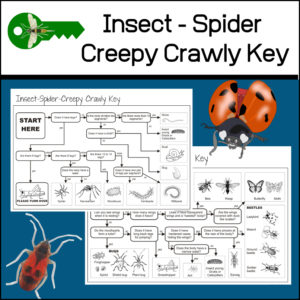Category: Life Science
- Home
- /
- Shop
- /
- By Subject
- /
- Science
- /
- By Grade
- /
- 6th-8th
- /
- Life Science
- /
- Page 3
Showing 41–60 of 96 resultsSorted by latest
-
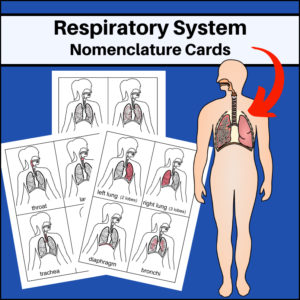 $2.00Buy Now
$2.00Buy NowRespiratory System – Human Anatomy Nomenclature Cards – This resource will help students learn and study the location of the following parts of the respiratory system: left lung, right lung, diaphragm, bronchi, bronchioles, alveoli, sinus cavity, nose, throat, larynx, trachea, and pleura. There are also 4 extra diagrams with no labels for you to use as you wish…such as give to students to have them color in and label the cards for themselves!
-
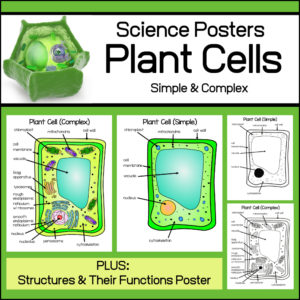 $2.25Buy Now
$2.25Buy NowThis Science / Biology resource offers 5 posters – Color posters which are perfect for bulletin boards or centers and B/W posters which are great to use as student handouts.
-
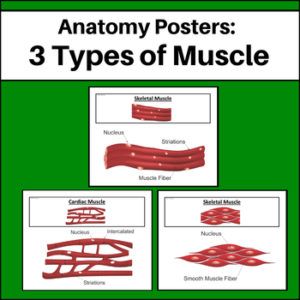 $2.00Buy Now
$2.00Buy NowPerfect for any Biology / Anatomy Classroom teaching human anatomy: Anatomy Posters – Types of Muscle. These 3 colorful posters will help students quickly identify each type of muscle (Cardiac, Skeletal, Smooth) as well as the parts of each muscle.
-
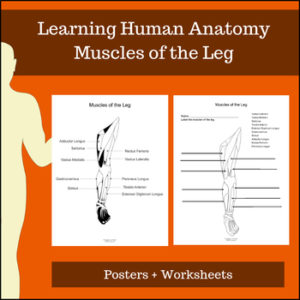 $1.50Buy Now
$1.50Buy NowMuscles of the Leg – Learning Human Anatomy will be exactly what you need if you are looking for a easy to read posters as well as a labeling worksheet for students. This resource actually comes with two worksheets, one with and one without terms. (You choose if you want your students to completely remember the names or if they need the terms to help them. )
See description below for more information.
-
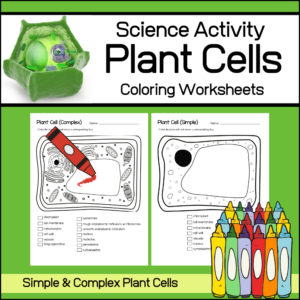 $1.25Buy Now
$1.25Buy NowInteractive Science learning – This resource includes 2 coloring worksheets: Simple Plant Cell and Complex Plant Cell. As students color (identify) each part, they will also create a corresponding key.
Structures to be identified and colored:
1. Simple Plant Cell – cell wall, mitochondria, chloroplast, cell membrane, vacuole, nucleus, cytoskeleton
2. Complex Plant Cell – cell wall, mitochondria, chloroplast, cell membrane, vacuole, Golgi apparatus, lysosomes, rough endoplasmic reticulum w/ ribosomes, smooth endoplasmic reticulum, nucleus, nucleolus, peroxisome, cytoskeleton
-
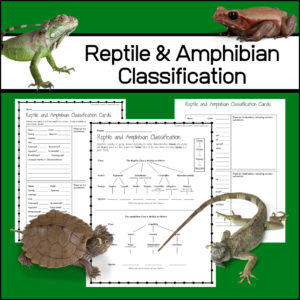 $2.25Buy Now
$2.25Buy NowThis Science / Biology resource includes 2 student exercises plus classification card templates that can be used for centers, projects and more.
-
 $2.25Buy Now
$2.25Buy NowThis Science / Biology resource offers 2 labeled posters showing the structures and organelles of an animal cell! I’ve also included a handout detailing the major function(s) of each structure/organelle. Structures and organelles include: centrosome, plasma membrane, mitochondria, vacuole, Golgi apparatus, ribosome, lysosomes, rough endoplasmic reticulum, smooth endoplasmic reticulum, nucleus, nucleolus, peroxisome, cytoplasm
-
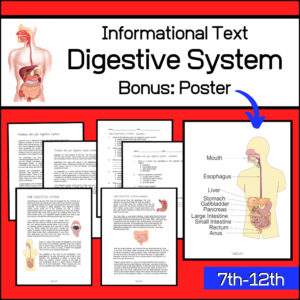 $2.50Buy Now
$2.50Buy NowThis Biology / Anatomy resource includes 2 informational text passages. The first details how the digestive system works and the second informs students of the most common health / medical issues that can occur within the system.
-
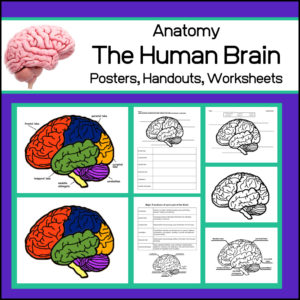 $3.00Buy Now
$3.00Buy NowThis Science / Biology / Health resource will help your students learn the different sections of the brain and the major functions of each. Sections included: frontal lobe, parietal lobe, occipital lobe, temporal lobe, cerebellum and medulla oblongata.
-
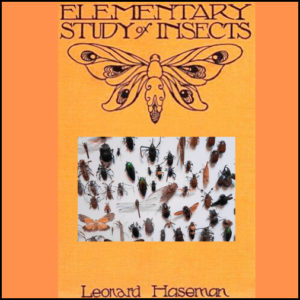 $2.00Buy Now
$2.00Buy NowThis is a downloadable copy of the book.
About the book: This book was written in 1923 by Leonard Haseman and can be a good tool to use when beginning to study insects. -
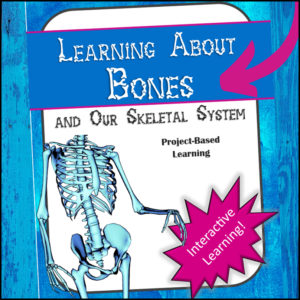 $4.00Buy Now
$4.00Buy NowStudents will enjoy this ANATOMY / BIOLOGY / HEALTH resource as they learn about their bones and skeletal system! Using this product, students can create either a lapbook or a Science notebook.
-
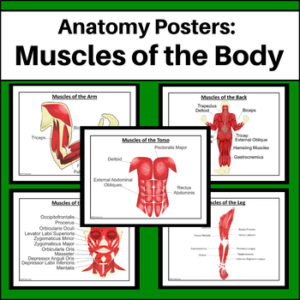 $3.00Buy Now
$3.00Buy NowPerfect for any Middle School or High School Biology / Anatomy Classroom teaching human anatomy: Anatomy Posters – Muscles of the Body. These 5 colorful posters will help students quickly identify muscles of the body (Arm, Leg, Back, Torso and Face). Great for Health classrooms as well!
-
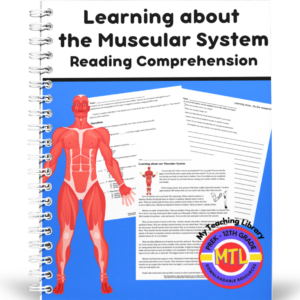 $2.00Buy Now
$2.00Buy NowStudents will read about the muscular system and learn facts such as how many muscles are in the body, what are muscle fibers, the three different types of muscles and much more. After reading and learning about the body / human anatomy, students will answer multiple choice questions.
Also included: A research and writing activity that may be assigned at your discretion!
Answer Key provided.
Reading level:
Flesch-Kincaid Grade Level: 5.3
Linsear Write Formula : 5.1 -
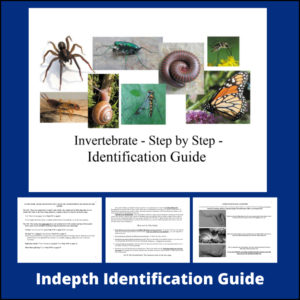 $3.00Buy Now
$3.00Buy NowThis 21 page resource will take students step by step through a guided identification process for invertebrates. This key is designed for 6th – 12th grades.
-
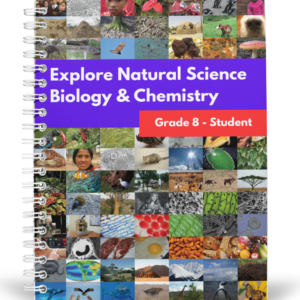 $15.00Buy Now
$15.00Buy NowThis Biology and Chemistry student textbook is designed to use with middle school students (specifically those learning at or ready for 8th grade work). View the table of contents in the description below.
Watch a video preview of this product here.
Get the TEACHER’S EDITION here!
Bundle and Save: 8th Grade Science Curriculum Bundle
-
 $4.50Buy Now
$4.50Buy NowThere are over 500 known species of sharks in the world! Most students love studying sharks and this unit has been created to help students record the knowledge they learn during a study on sharks as well as personal reflections of what has been learned.
This resource includes:
- – Creating a Notebooking Project…What is Notebookiing?
- – Supply list
- – Teacher pages
- – Student organizational pages
- -‘Jump off’ Questions designed to get students thinking about the different shark related questions they can research
- – 32 Notebooking pages
Notebooking is a coined term for what can also be referred to as educational journaling or scrapbooking.
-
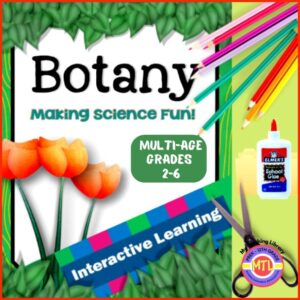 $10.00Buy Now
$10.00Buy NowGive students an engaging way to learn about plants with this interactive, project based resource. Designed to be used for multiple ages and grades, 2nd-6th grades, students will learn about plants:
- – classification
- – photosynthesis
- – the plant cell
- – parts of the plant
- – things plants need to grow
- – the life cycle of a plant
- – plant leaves
- – different types of plants (non-flowering, carnivorous, poisonous)
-
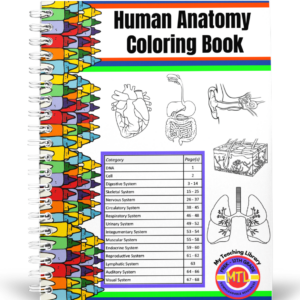 $9.75Buy Now
$9.75Buy NowThis 68-page anatomy coloring book has been designed for 5th-12th grade classrooms (Health, Science, Anatomy, Biology, Physiology).
Categories:
- DNA
- Cell
- Digestive System
- Skeletal System
- Nervous System
- Circulatory System
- Respiratory System
- Urinary System
- Integumentary System
- Muscular System
- Endocrine System
- Reproductive System
- Lymphatic System
- Auditory System
- Visual System
-
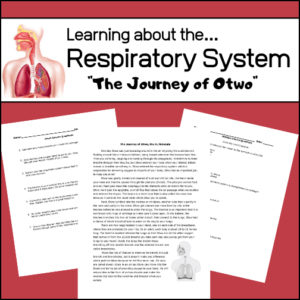 $2.00Buy Now
$2.00Buy NowStudents will learn about the respiratory system by following Otwo (the oxygen molecule) as he goes from bouncing around in the outside air into the human body! After reading the story, students will complete two worksheets (multiple choice and short answer) to access their understanding. Answer keys provided.


